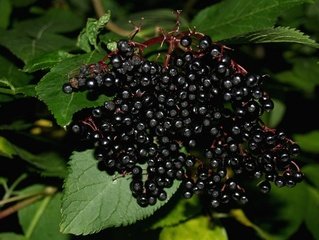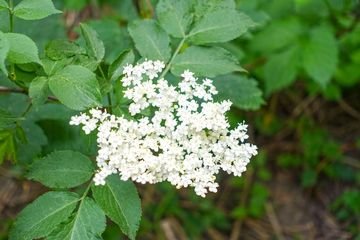On the first Friday of each month the Botanic Cottage hosts a drop-in session for those living with dementia and their family members, always with an RBGE inspired theme. With the garden currently closed due to the Covid-19 pandemic, our staff have written a related topic for July: the Edinburgh Coastline.

A different view of Edinburghshoreline.org.uk: from the Firth of Forth looking towards Granton

From 2018-2020 the Royal Botanic Garden has run the Edinburgh Shoreline project; exploring and celebrating the cultural and natural heritage of our coastline. There’s no doubt that having the sea right on our doorstep is a great asset for our capital city. It’s a great place to connect with nature, take in the views and sea air and find an escape from busy city life.
Edinburgh has some very important habitats along its coast – it is both a Site of Special Scientific Interest and a Special Protected Area for the internationally important populations of wading birds who over-winter with us in the bays and mudflats such as those at Cramond. It’s important that we protect these habitats and preserve them for the future. Biodiversity loss, climate change and now the economic impacts of Covid-19 can help us to see that our future lies in green capital cities, bringing benefits to our wildlife and to people.
Part of the project was to speak to local people to capture their memories of living near the coast, and often from their childhood. RBGE recorded many of these interviews, so please click the link to see the recordings which tell the tales of times gone by in Edinburgh; there’s often happy memories, stories of youth and playing, spending lots of time in the natural world and close to wildlife, changing landscapes, food and pastimes: Edinburgh Shoreline

Throughout the project we held regular plant discovery walks. Although not all of our shoreline is green and lush, amazing wildflowers can often be found thriving among the developed areas; derelict pieces of land can be especially good! Plants always find a way, so please keep an eye out for these diamonds in the rough. During this stressful time of the pandemic, why not head out for a little coastal walk? Focus on the beauty around us and what a little gentle exercise and nice views can do to lift your mood. Our Community Engagement Manager Judy has put together a handy list of plants you’ll often find in a costal area and some of the ways they’ve been used in health and wellbeing over the years. We’d love to know if you can spot any of these on your walks!
! Please Note – the plant profiles here are for information only, and in no way constitute a recommendation for use. If you are considering using traditional herbal medicines, please seek the advice of your GP and a medical herbal professional and never use them as substitutes for a condition that should be seen by conventional medical specialist.
This article is intended to encourage you to look out for these plants on your shoreline walks but please do not to gather them. Any botanically based medicines should be prescribed by qualified practitioners and any edible or medicinal plants should be identified and sourced by professional foragers or herbalists. There are legal restrictions on foraging plants as well as negative ecological implications.
Medicinal plants of the Shoreline
Ribwort Plantain Plantago lanceolatae
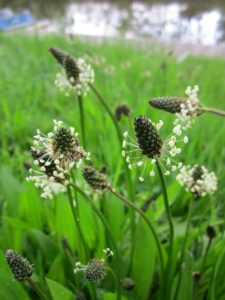
This perennial plant is often described as a weed but has long been used in traditional first- aid application. It has long ribbed leaves and tall flower stems which attract butterflies and moths. The leaves were traditionally pulped and used as a poultice* for slow healing wounds. Fresh leaves can be pulped and applied to insect bites and stings as the leaf produces a soothing juice for inflammations. Juice from the leaves has been drunk in the past to soothe cystitis, diarrhoea and lung infections. Plantain has been known for its expectorant* qualities and as a tincture* taken for catarrhal conditions. A syrup or infusion* was traditionally considered great for soothing sore throats.
Pot Marigold Calendula officinalis
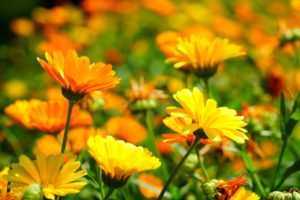
A bright cheery flower, usually orange, known as pot marigold (not to be confused with French marigold.) The flowers have been used for a huge range of medicinal purposes and are thought to be anti-bacterial, anti-inflammatory, anti-spasmodic, anti-haemorrhage, anti-histamine and are a diaphoretic*. An infusion of flowers has been traditionally used for digestive troubles and can be used as a gargle for inflammation of the gums and following tooth extractions.
A cream or ointment is considered most beneficial in soothing dry skin, varicose veins, insect stings and even sunburn. The anti-fungal action is thought to be useful in healing infections like ringworm and athlete’s foot. Poultices made with the flowers were applied to broken skin and the leaves used to be made into poultices for gout.
Elder Sambucus nigra
The beautiful, sweet scented, cream coloured clusters of flowers from the elder tree have long been used as an expectorantto help reduce fever, bring down temperature and aid circulation. High in potassium salts, which are known to contribute to the elimination of fluids, it is also known to be useful in eliminating toxins in the body and effective in breaking down kidney stones. For dental purposes it has been used as an antiseptic mouthwash to treat gingivitis.
The dark purple berries in autumn are rich in vitamins A, B and C. The berries can be toxic and should not be eaten raw. They must be cooked for use which is why they are often used as preserves and wine. Elder berries contain a substance called sambucol (from the plant’s Latin name sambucus nigra). Elder also contains the pigment, quercetin which is a strong antioxidant known to help prevent heart disease and, reduce cholesterol.
Sea Buckthorn Hipphophae rhamnoides
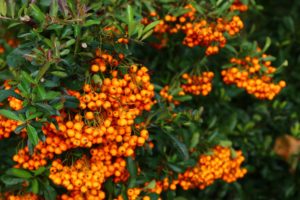
Sea buckthorn in Europe grows mostly along coasts, the sea spray prevents other species from out competing it. It is often found along coastal paths where is helps to combat the erosion of sand dunes. The bright orange berries are abundant in vitamin A, C and E so it is thought to be a very good aid in the fight against bacterial infections. It is reported to provide a boost to tissue regeneration and fights liver problems and heart disease. It is also considered to be highly effective in combatting retinal deterioration and protect against the effects of exposure to radiation.
Wild Carrot Daucus carota
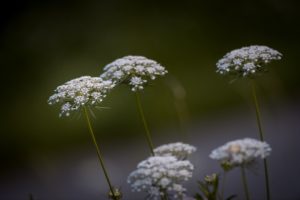
The white flowers look like an umbrella, and although distinctive, can be confused with hemlock (a highly toxic, skin irritant plant) so great caution should be taken with identification of this plant and any medicinal or edible parts should be prescribed by a qualified practitioner or herbalist. The flowers usually sit in a ‘nest’ of feathery green bracts and very often have a single, central purple flower.
The plant gives off a scent like carrots and the young roots resemble carrots but soon turn woody and fibrous. Medicinally, wild carrot has been used as a diuretic* and is considered helpful for cleansing the liver and kidneys. An infusion can help oedema* and flatulent indigestion.
Caution: should not be used in pregnancy.
Thrift America maritima
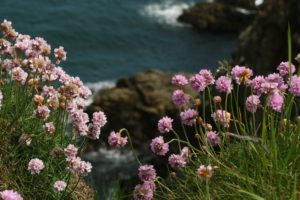
Often known as sea pinks, this lovely flower grows in clumps in exposed rocky and sandy areas. It is not often used in herbal medicine but has some antibiotic properties and has been used to aid weight loss as well as being used for nervous disorders and urinary infections.
Caution: used as a digestive treatment only as it can cause skin problems when applied as an ointment.
Scurvy Grass Cochlearia officinalis
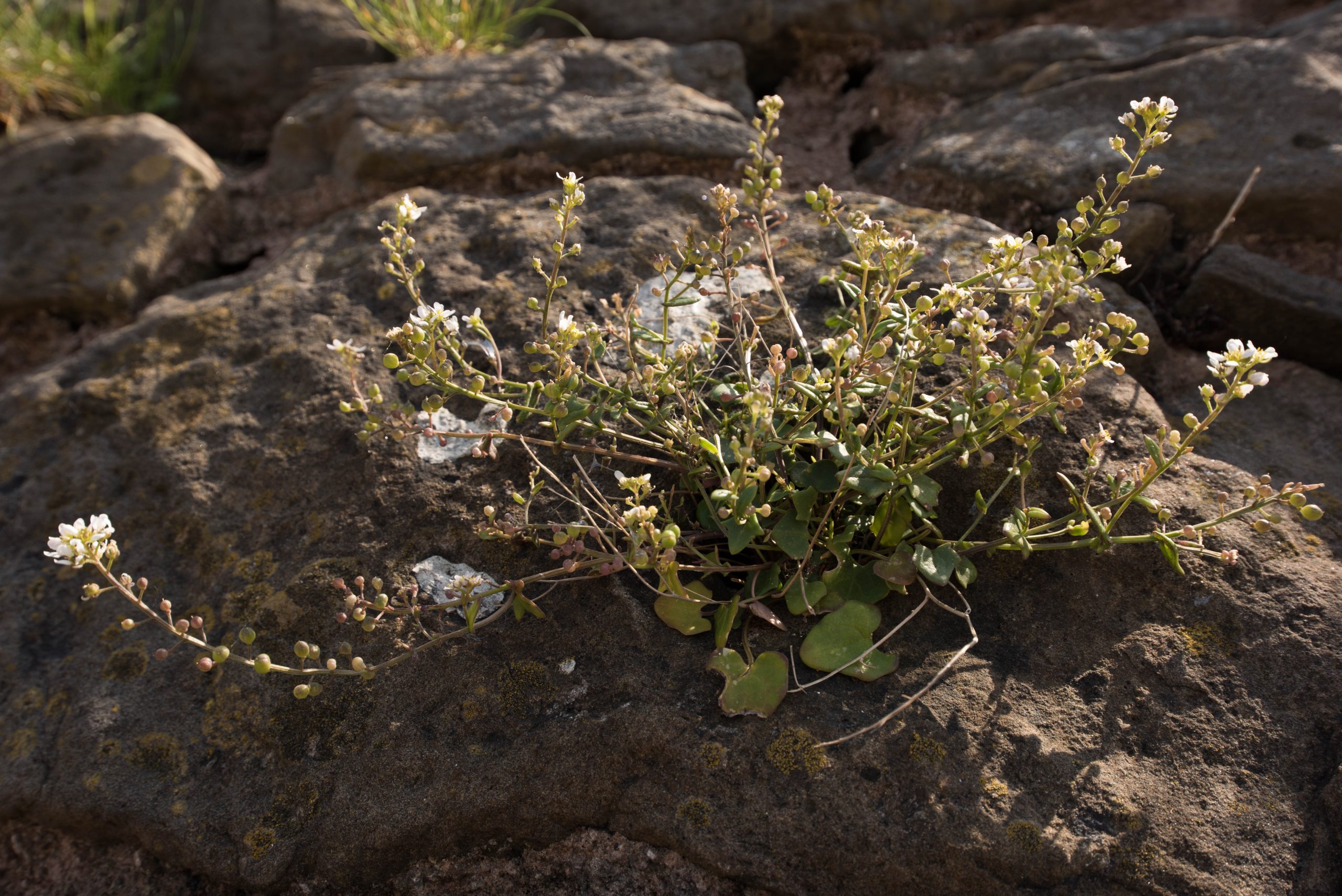
Scurvy grass is rich in vitamin C and as the name suggests was used as a preventative to scurvy in the past, especially by sailors who were at sea for a long time without fresh fruit and vegetables. It doesn’t look like grass at all, rather it has succulent leaves and small white flowers. Scurvy grass is also antiseptic and was beneficial in healing bleeding gums caused by scurvy.
Stinging Nettles Urtica diocica
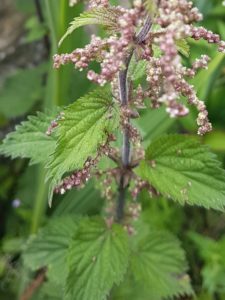
Often thought of as a weed but this plant has a wonderful range of benefits in health and to wildlife. The nettle is highly efficient at absorbing vitamins and minerals from the soil and so makes for a highly nutritious addition to soup and stews. Boiling the stems removes the sting completely and an infusion of nettle leaves is said to be beneficial for arthritis, rheumatism and gout. It is also considered to be an excellent blood purifier. The juice has been traditionally used for anaemia, arthritis and tendonitis. A ‘lashing’ of the leaves around arthritic joints, though highly uncomfortable, was thought to be effective in treating this painful condition.
Caution: this plant does cause irritation on contact and should only be handled with appropriate protective hand and arm skin protection.
Cleavers Galium aparine
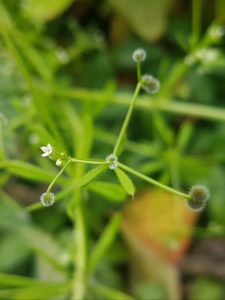
Cleavers is most commonly known as ‘sticky willie’ for its adhesive qualities, most often sticking to clothing. Often seen as a weed growing everywhere and entwining itself around shrubs. However, cleavers have commonly been considered as a superb lymphatic* cleanser and detoxifier. The leaves have been used as a juice or infusion for lymphatic cleansing, easing cystitis and treatment of stones in the urinary tract. Popular as a cold infusion it is said to be a most refreshing and revitalising tonic.
Hawthorn Crataegus monogyna
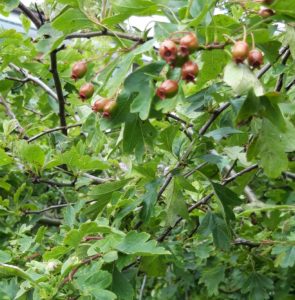
The hawthorn tree is steeped in folklore as a protective tree. Hawthorn is best known for its *hypertensive and cardiac tonic properties. The leaves, flowers and berries have been used in infusions and tinctures to strengthen the heart, circulation and treat high blood pressure.
References
Neal’s Yard Remedies: Cook, Brew and Blend Your Own Herbs, 2011
Bartram’s Encyclopedia of Herbal Medicine, Thomas Bartram, 1995
Consulted: Greg Kenicer PhD, RBGE Botanist and author of ‘Scottish Plant Lore’ the new edition is available now on-line from the RBGE book shop via this link – Greg Kenicer Scottish-Plant-Lore
*Glossary of terms:
- Diaphoretic – botanical properties which encourage sweating to eliminate toxins and reduce fever.
- Diuretic – are medications designed to increase the amount of water and salt expelled from the body as urine.
- Expectorant – a medication that helps bring up mucus and other material from the lungs, bronchi, and trachea.
- Infusion – the process of extracting chemical compounds or flavours from plant material in water susually taken as hot or cold tea.
- Hypertensive – another word for high blood pressure.
- Lymphatic – is an organ system in vertebrates that is part of the circulatory system and the immune system.
- Oedema – a condition characterised by an excess of watery fluid collecting in the cavities or tissues of the body.
- Poultice – a soft moist mass, often heated and medicated, that is spread on cloth and placed over the skin to treat an aching, inflamed or painful part of the body. It can be used on wounds such as cuts.
- Tincture – an alcohol based extract of plant or animal material.
Introduction written by Charlotte Walker & plant profiles by Judy Paul.
Edited by Greg Kenicer PhD & Laura Gallagher.

